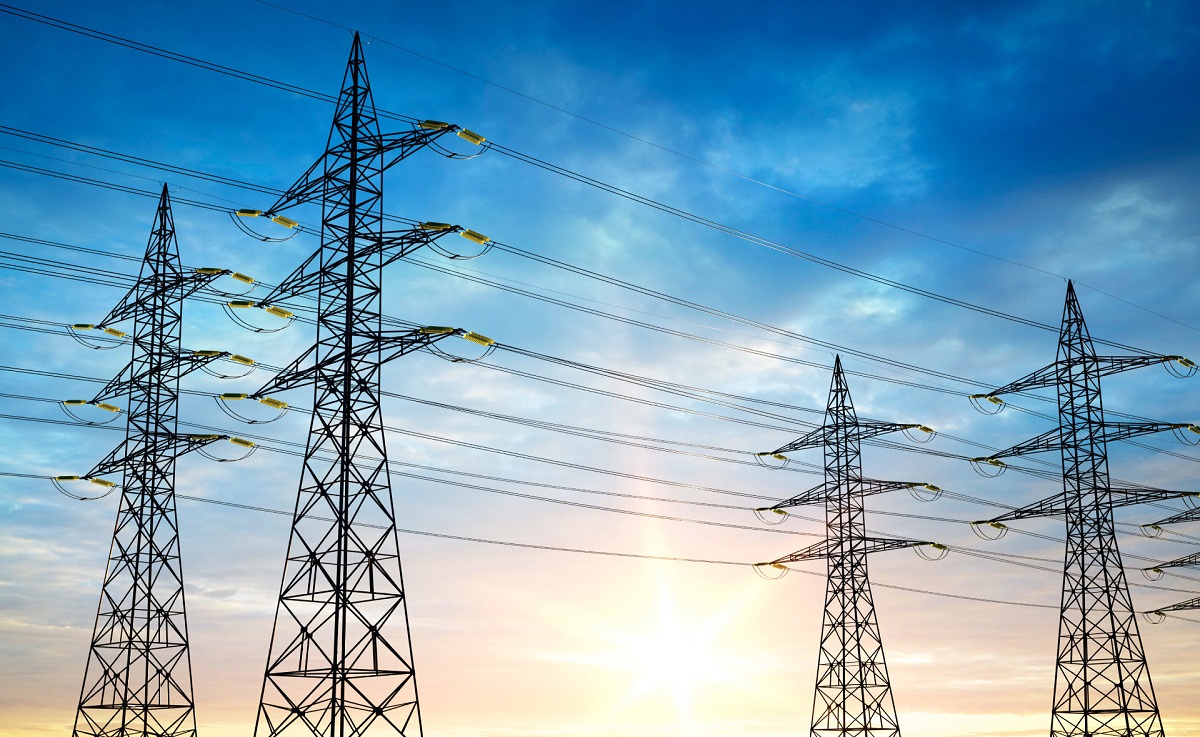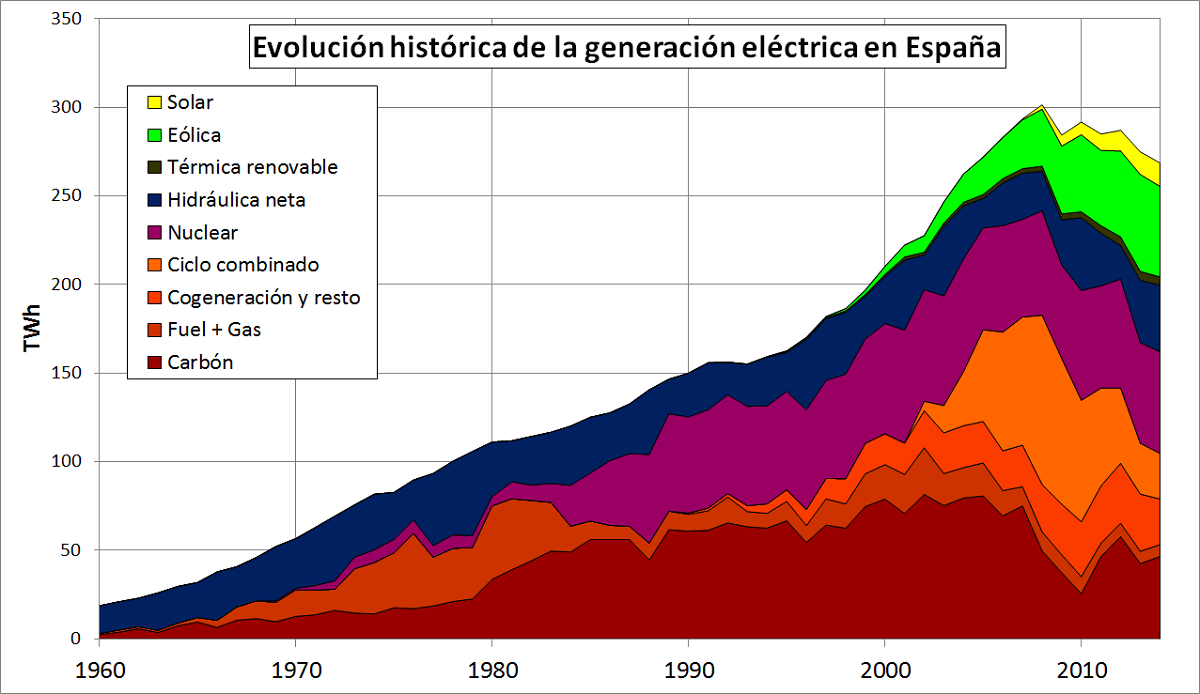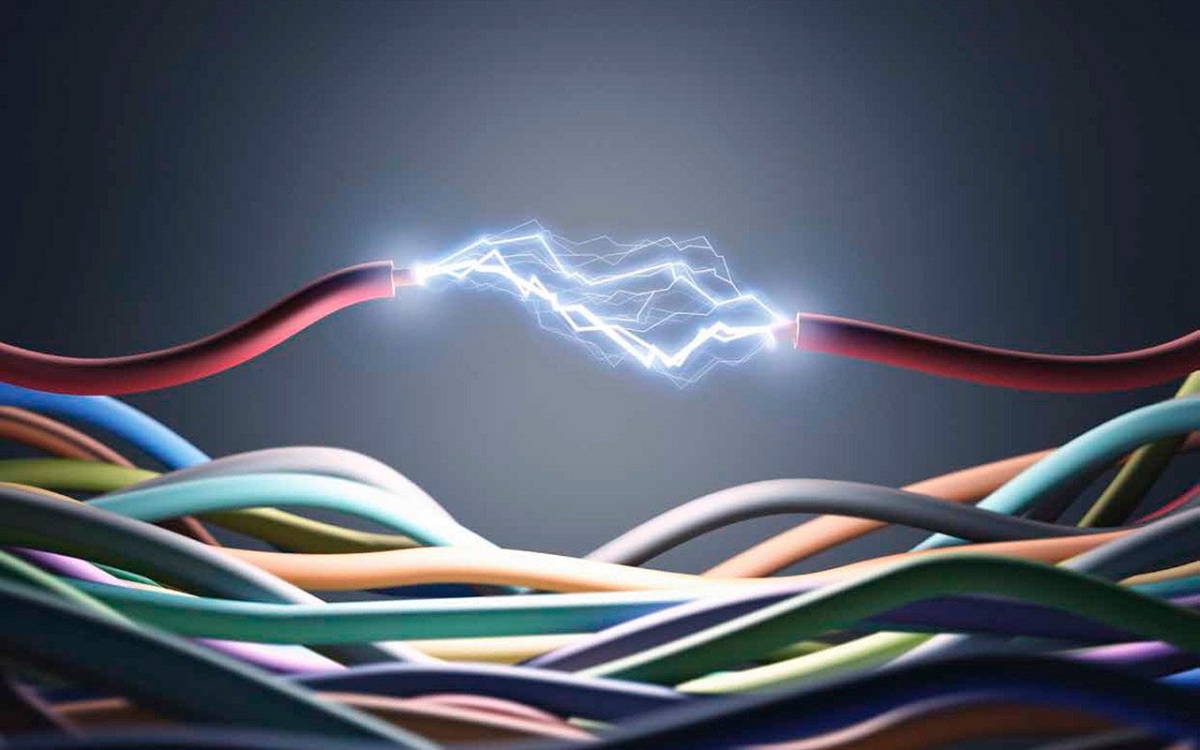
As we know, in Spain we have an energy mix to meet the demand throughout the country. The energy sources in Spain They have different origins and are divided into renewable and non-renewable energy sources. By primary energy we understand here since it is contained in the source from which it comes and the final energy is that which is used in the place of destination.
In this article we are going to tell you everything you need to know about energy sources in Spain and what their different uses are.
Energy sources in Spain

Until now, oil is the main source of non-renewable primary energy in Spain. And it is that oil is used to satisfy 42% of all demand in the country. In the following renewable energy sources we find natural gas, nuclear energy and coal. The rest of the energy is provided by renewable energies. Throughout recent history, it was possible to see that, from the economic crisis that affected Spain mainly between 2008 and 2014, a decrease in energy consumption was reflected.
Petroleum Products

We are going to see how the main sources of energy in Spain are prepared and how they work with respect to petroleum products. Through the oil refining process, the following products are obtained: liquefied petroleum gas (LPG), naphtha, gasoline, ethylene, propylene, kerosene, diesel, fuel oil, pitch, coke and lubricating oil.
LPG (butane and propane) is the first component extracted from petroleum by distillation. They are used as fuel for cooking, hot water and heating. Naphtha is the main component of many products such as gasoline and solvents, and it is also a raw material for ethylene and propylene. Gasoline is used as a fuel for automobiles.
Ethylene and propylene are hydrocarbons that are used in the production of plastics, resins, solvents, ketones and derivatives. Kerosene is a medium-density compound that is used as aviation fuel and, after further processing, is used as a solvent or heating fuel. Diesel is purified through multiple processes and used in automobiles, agricultural and fishing machinery, boats and authorized vehicles and in heating boilers, among others. On the other hand, we also have fuel oil, which is a very heavy compound and its main use is as an industrial fuel.
Finally, in the petroleum products used in the various energy sources in Spain we have asphalt. It's about a construction material used for roads, tracks and circuits. They are also used as waterproofing materials for roofs and floors.
Non-renewable energy sources in Spain

We continue to list the non-renewable energy sources in Spain whose main origin is petroleum products. Spain has the infrastructure for the distribution of petroleum products that makes it a symbol of the world. Compañía Logística de Hidrocarburos (CLH) connects eight refineries on the peninsula that produce liquid petroleum derivatives to its network through 4.020 kilometers of oil pipelines, 40 storage facilities and 28 airport facilities. A double pipeline owned by Repsol also connects the Cartagena and Puertollano refineries.
The Enagás infrastructure network enables the universal consumption of natural gas. It has seven LNG regasification plants, four underground warehouses, 19 compression stations, an 11.000 km natural gas pipeline network and six international connections that allow the import and export of this resource. There are also connections from the peninsula and the Balearic Islands.
Recent changes in consumption reflect the economic crisis that affected our country from 2008 to 2014. In the last two years, gasoline consumption has fallen from 6,3 tons to 4,6 million tons and diesel consumption has dropped from 35,4 tons to 28 tons, 4 million tons. In 2015, as consumption increased, the situation changed.
Of all petroleum products, kerosene is the one that has decreased the least in consumption, since in recent years Spain has experienced a period of growth in foreign tourism and its main means of transport is air transport.
The supply crisis in the construction and public works sector has had an impact on asphalt production. Liquefied petroleum gas (butane and propane) continues to be consumed by homes or for heating in places where natural gas does not reach.
Spanish electric power
The electricity production sector in Spain is defined as the implementation of power plants in its territory and the diversification of production sources due to the introduction of natural gas and renewable energies as the main resources since the beginning of this century.
The hydroelectric plant is located in the basins of the great rivers of Spain. Water supply is also a factor in the construction of thermal power plants and nuclear power plants. The first coal plants were located in the coal basins of the peninsular northwest and the province of Teruel, later they were installed on the coast. Fuel oil has played a strategic role and has disappeared from the peninsula, but it is a priority supply source for Ceuta, Melilla and the Balearic Islands.
The availability of an extensive network of gas pipelines allows the construction of combined cycle plants in the Ebro Valley. Nuclear power plants are installed in areas close to large consumption centers. In this way, energy transport is less.
The structure of the annual power generation from renewable energies is often variable because it is affected by water and wind. This is the case in 2015: wind energy (51,4%), hydraulic energy (29,7%), photovoltaic solar energy (8,4%), thermal solar energy (5,5%) and other renewable energy sources (5%). The Red Eléctrica de España distributes the production of large power plants in Spain to the regions of consumption through a network of overhead lines that cover the whole of Spain with a total length of 43.660 kilometers.
I hope that with this information you can learn more about energy sources in Spain and their characteristics.